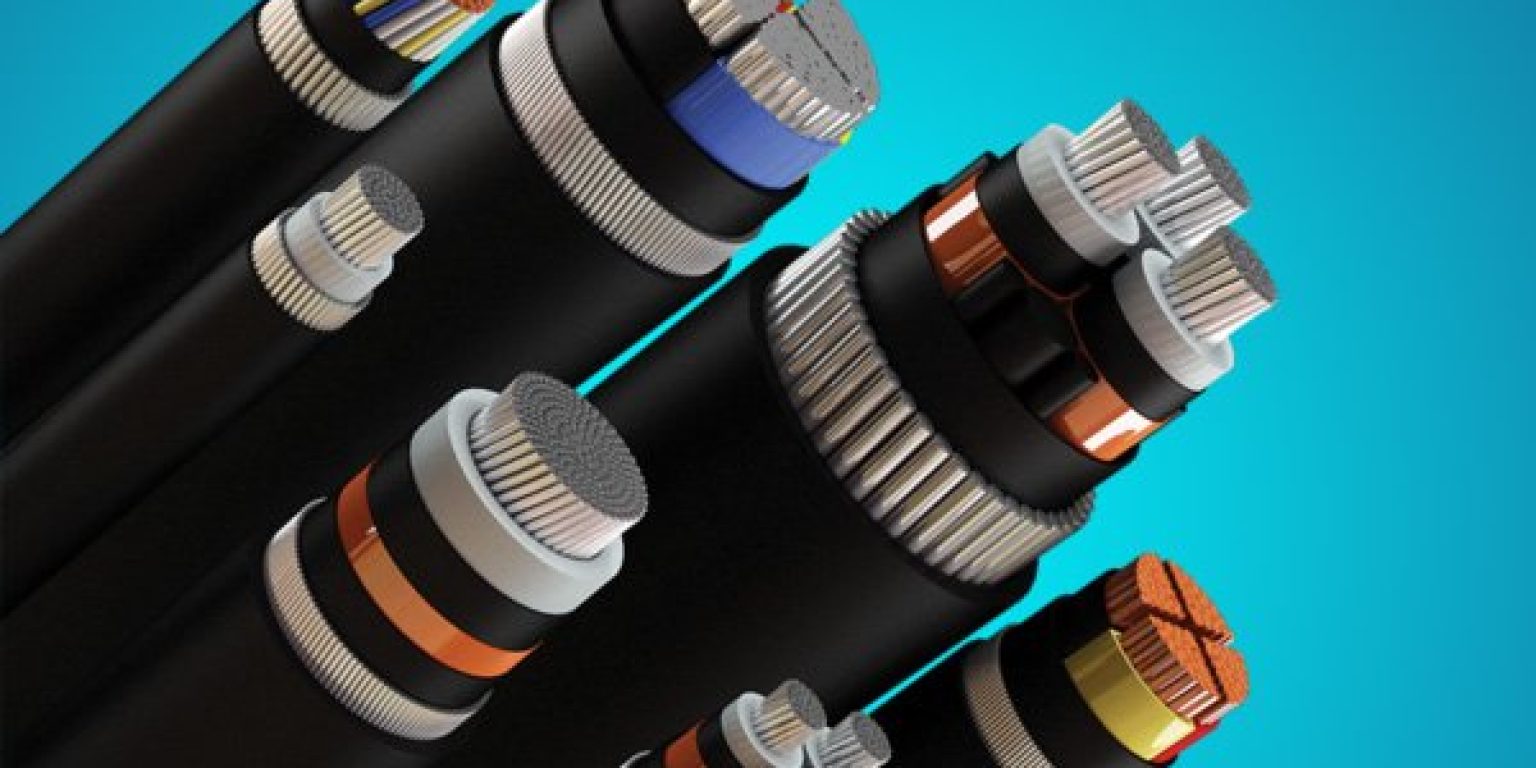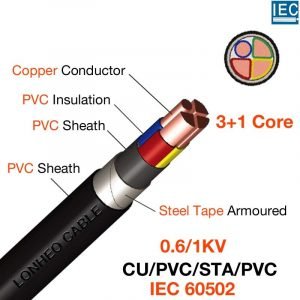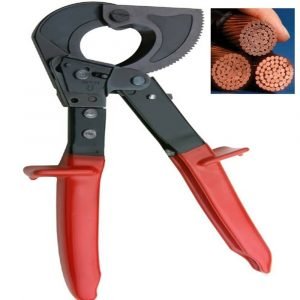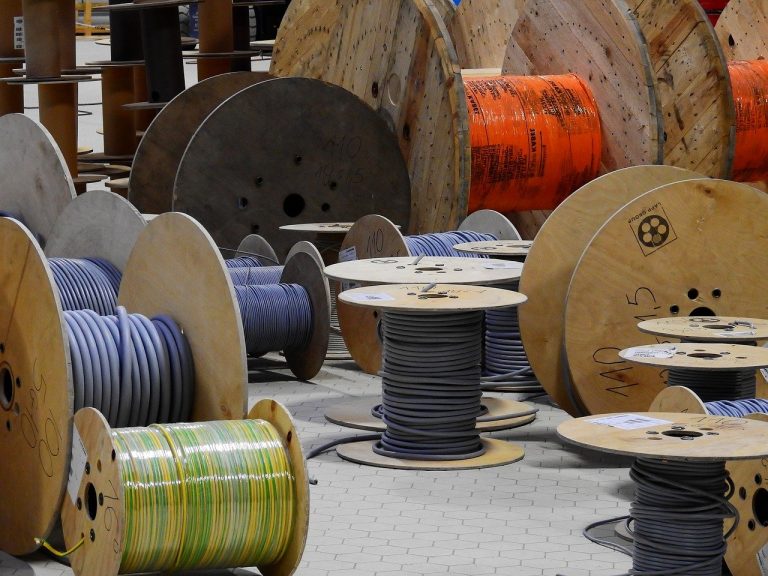An armored electrical cable is a typical cable with a robust protect armoring that protects the wire. Even though it is pretty common, most of us know little about it. Can you differentiate this type of cable from typical Polyvinyl Chloride cables? When exactly does this type of cable come in handy? These are some of the questions you ought to be in a position to answer.
Whenever someone mentions an electrical armored cable, the first thing that comes to mind is the SWA cable. But is the SWA cable the only cable with a protective layer between its jackets? This post seeks to answer this question alongside other critical questions that often come to mind when we think of wires with armoring. I guarantee that it is the best way to stock up your knowledge on steel-armored electrical cables and other electrical cables with armoring.
1.What is an Armored Electrical Cable?
Generally speaking, an armored electrical cable is a reinforced cable. Essentially, it is more robust than standard electrical wires. Most of us mistakenly believe that the Steel Wire Armored (SWA) cable is the only cable with armoring. However, contrary to popular belief, there are several classifications of cables with armoring. The three main categories of armored cables include;
Steel Wire Armored (SWA) cable
A steel wire armored cable is one of the most commonly used power and auxiliary cables. As the name suggests, it has steel wire armor whose sole purpose is to minimize any risks of the cable getting haggard or broken. This cable type is suitable for external wiring applications because it can withstand any mechanical extremities that might damage it. If you need an outdoor armored cable, this cable is definitely worth some consideration.
That being said, you need to be pretty careful when choosing one that suits your specific application. The cable occurs in two primary forms: a low-voltage armored cable and a high-voltage armored cable. Provided you’ve chosen a suitable option, you can use an armored electrical cable for underground power systems, cable networks, and control systems.
Steel Tape Armored (STA) Cable
A steel Tape Armored (STA) cable is typically applicable in transmission systems that do not exceed 35KV. Essentially, it comprises a metal amour layer within its sheath. Its amour is specifically suitable for protection against external squeezing. Therefore, this cable type will come in handy if you intend to perform wiring applications relating to construction, mine cabling systems, and the petrochemical industry.
Whatever electrical armored cable you settle for, you need to keenly ensure that the wire does not bend below the minimum radius specified by its manufacturer. Ideally, all armored cables have a minimum bending radius. If it is not indicated, it is best to contact the manufacture and inquire about the exact minimum bending radius before purchasing the cable. Other standard categories of armored cables include;
- Wire-Braid Armor
- Aluminum or aluminum alloy wire armored cable
2.When to use Armored Electrical Cable?
The primary purpose of armoring in electrical cables is to provide action against external extremities. So, an electrical armored cable will serve you better when transmitting electricity in a punitive environment. The outdoors is an example of an environment that calls for the use of armored cables. An outdoor armored electrical cable is effective in such an environment because its armoring provides sufficient protection against UV rays, water, and mechanical risks.
Needless to say, you need to be keen when choosing an armored cable that suits your specific application. Each Armor classification is best suited for a particular role. For instance, a steel-armored electrical cable is suitable for high-drop locations and applications that involve extreme tension. On the other hand, if you intend to carry out some burial applications, it would be best to go for a steel tape armored cable. This type of cable can withstand excessive squeezing, and any electrical wire installed beneath the ground level will face an excessive squeeze.
You also ought to consider the cable’s size. Like standard electrical cables, the size of any wire with armoring determines the amount of electrical current that it can carry. For example, a 4-core 16 mm armored electrical cable can carry up to 1kV volt in optimum ambient temperature. Making such a choice may be pretty challenging, especially if you don’t have any electrical cable expertise. However, all you need to do is keep your specific needs in mind when choosing the cable to arrive at the most appropriate one.
3.How to cut Armored Electrical Cable?
The length of cable required tends to vary from one application to another. But, it is often difficult to determine the exact measurement of wire needed for a particular wiring application. Consequently, you might find yourself in a situation where you have to cut the cable.
Like a standard cable, all you need are a couple of cutting tools and a steady arm. However, it is more challenging to cut an electrical wire with armoring than a standard cable. Armored cables have a tough exterior compared to other electrical wire types because their design is calibrated for maximum performance, steadfastness, and safety. Therefore, it would be best to avoid the hustle of cutting any electrical armored cable by ensuring that you buy the right length of wire.
4.How to cover Armored Electrical Cable?
Most of us often find covering an armored electrical cable challenging, especially when dealing with outdoor underground applications. Mostly, people are not sure whether or not to use a conduit often plagues our minds. Well, armored cables can withstand external extremities, so you don’t necessarily have to use an extra protective cover. Nevertheless, in such a scenario, you need to ensure that your choice of cable is a burial-rated one, such as an SWA steel-armored electrical cable
Still, you need to ensure that you bury the cable deep enough that it is improbable to incur accidental disturbances. It is important to note that there are no definite rules concerning the appropriate depth you need to dig when covering a cable. Nonetheless, some local authorities have put in place regulations that govern the depth of covering an armored electrical cable. Thus, it would be best to check out your local area regulations concerning cable burial first.
5.How to install Armored Electrical Cable?
Do you intend to perform an armored cable installation and are pretty confident that you can do it by yourself? If the answer is yes, I must admit that the entire process is relatively simple. However, there are a few things that you ought to keep in mind.
First, you need to ensure that your cable choice is the right one. For instance, if you intend to carry out an installation whose current requirement is below 1KV, you should go for a low voltage armored electrical cable. Secondly, you must make sure that the cable does not go below the minimum bending radius indicated by its manufacturer. Provided you carry out the armored electrical cable correctly, you can rest assured that it will serve you optimally for a long time.
Last Updated on June 16, 2021 by Richard





